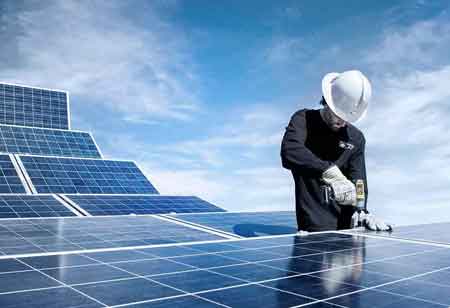Thank you for Subscribing to Energy Business Review Weekly Brief
Floating Solar Farms: A New Frontier in Renewable Energy
Floating solar farms are gaining global attention as a renewable energy solution. They could potentially increase energy yield and conserve land.

By
Energy Business Review | Tuesday, October 22, 2024
Stay ahead of the industry with exclusive feature stories on the top companies, expert insights and the latest news delivered straight to your inbox. Subscribe today.
Floating solar farms are gaining global attention as a renewable energy solution. They could potentially increase energy yield and conserve land.
FREMONT, CA: Floating solar farms, a relatively recent innovation, are gaining significant traction globally. These distinctive power plants harness solar energy while occupying water surfaces like reservoirs, lakes, and coastal areas. As the demand for clean energy continues to escalate, floating solar farms are positioning themselves as a viable solution. Europe, in particular, has experienced substantial growth in this sector, with countries such as the Netherlands, France, and the United Kingdom making significant strides in developing and deploying floating solar installations.
A key driver behind the expansion of floating solar farms in Europe is the limited availability of suitable land for conventional solar power plants. By utilising water bodies, these projects minimise the need for land conversion and mitigate the environmental impact of traditional solar installations. Furthermore, floating solar farms often benefit from cooler water temperatures, which can enhance energy production.
Benefits of Floating Solar Farms
Floating solar farms present a range of advantages that enhance their viability as a renewable energy solution. Research indicates that these installations can yield up to 15 per cent more energy than traditional ground-mounted solar farms, primarily due to the water's cooling effect, which boosts solar cells' efficiency. Additionally, floating solar farms contribute to land conservation by utilising water surfaces, thus preserving valuable land resources, particularly in regions with limited land availability or where solar power plants could have significant environmental impacts. They also play a role in water conservation by reducing evaporation from reservoirs and lakes, helping to maintain water levels. Furthermore, the shading provided by these installations can mitigate algae growth, thereby improving water quality, which is especially crucial for reservoirs designated for drinking water or recreational use.
Environmental Considerations
Despite their numerous benefits, it is vital to acknowledge the potential environmental impacts associated with floating solar farms. The construction of these installations may disrupt aquatic ecosystems, necessitating careful planning and mitigation measures to minimise habitat loss. Additionally, using chemicals and materials related to floating solar technology could adversely affect water quality, underscoring the importance of effective management and monitoring. The visual impact of floating solar farms on water bodies must be considered, as they can alter the aesthetic landscape. Integrating these projects thoughtfully into their surroundings is essential for addressing aesthetic concerns.
As technology advances and costs decline, floating solar farms are poised to be increasingly significant in addressing global energy demands. Their ability to generate clean, renewable energy while reducing land use and environmental impact positions them as a promising solution for a more sustainable future.






